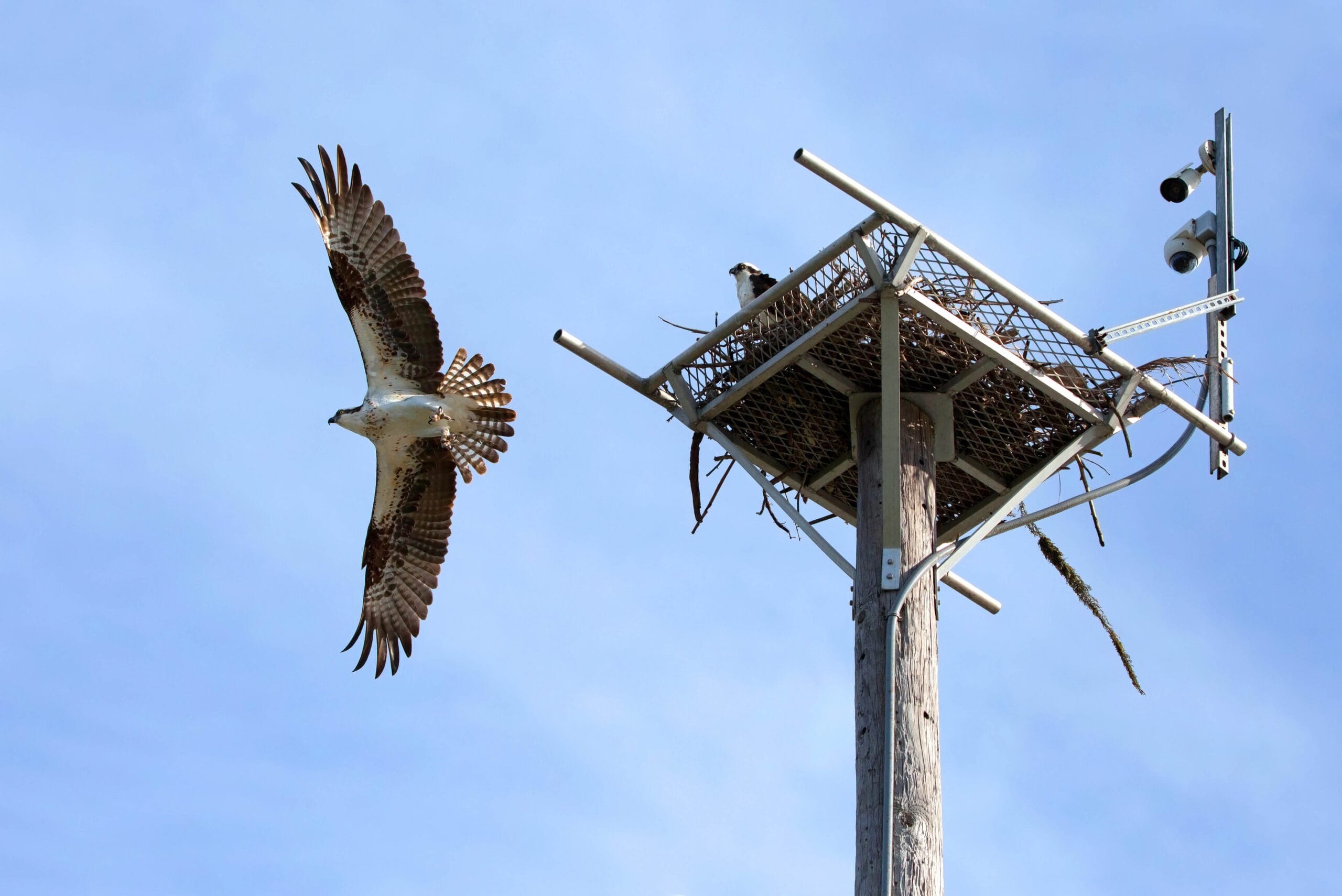MIGRATORY BIRDS
New Braunfels, TX, February 14, 2024

February 14th or Valentine’s Day sparks love in the air and romantic feelings across the country. As a safety professional, the only thought that comes to my mind is the official start of bird season. Specifically, Redtail hawks will be finalizing their courtship during the month and will produce eggs very soon. Because of these mating and nesting cycles, North America passed the Migratory Bird Treaty Act of 1918. Currently, there are 1,093 species of birds protected under the act with an additional 342 species listed as Birds of Conservation Concern. Those numbers pretty much guarantee that many of us, either working at height or simply working on the ground, will be impacted by the presence of birds or a bird nest at a cell site in 2024.
As we discuss Migratory Birds, we are going to break the topic into three main areas:
- FIRST, SOME HAZARDS WITH NESTING BIRDS AND HOW TO MITIGATE THEM,
- COMMON SIGNS TO HELP YOU IDENTIFY AN ACTIVE NEST, AND
- LASTLY, WHAT STEPS TO TAKE IF YOU ENCOUNTER A NEST.
THE HAZARDS OF NESTING BIRDS
Nesting birds present some serious hazards to the workforce. According to a NATE video, the most common are falls and lacerations. Some birds can become aggressive and cause aerial workers to make sudden movements that could lead to falls, so it is critical that you maintain 100% tie-off to the structure at all times. Birds will try to attack you from behind so try to protect the back of your head as much as possible or take shelter within the tower structure itself if possible. Some birds might even be large enough to render you unconscious after striking you so protect your face and ears by covering them up or hiding behind larger antennas. Do not think that nests are isolated to the tower top. There are several ground-nesting species of birds as well as lower portholes on monopoles and even ice bridges. Be aware and be prepared, nesting birds of prey will not hesitate to protect their nest if you happen across it while working on the job site.
COMMON SIGNS OF AN ACTIVE NEST
If birds become agitated, aggressive, or avoid landing in the nest due to worker presence this could indicate the nest may be active. I once encountered a site where two red-tailed hawks descended on our crew while opening the compound gate. Warning signs from the bird like high pitch screeching or aggressive movements toward workers can also be a sign of an active nest. There is no way to determine if a bird is protecting eggs, hatchlings, or maybe even recently deceased babies without actually looking in the nest. This action should never be one you decide to take on your own. You must know for sure what you are dealing with before attempting to look inside a nest. Wildlife agencies should be consulted before working at sites with nests and they can guide for completing work during the nesting season safely. In some cases, a biologist might need to be consulted to determine the nest status and evaluate your work options. The carrier or tower owner will often provide written instructions via email to ensure proper steps are taken. It is imperative to follow these guidelines to protect yourself and the animals.
WHAT TO DO IF YOU SEE IF A NEST
If a nest was identified during a previous visit, the structure owner’s NOC or carrier should advise you of this at check-in and offer guidance on how to proceed. If you don’t get this notice and see a nest while preparing to work or during your work activities, stop immediately, notify the tower owner, and call the safety hotline. Information regarding the location and height of the nest, description of birds observed/species, observations of bird activity, and photos of the nest (if safe to accomplish). The eagle protection act forbids disturbance while some other species do not. This means if your scope of work does not disturb the animal and they are not aggressive you might be allowed to proceed. Sometimes we can get a speedy resolution and other times our projects can be delayed several months. When faced with the hazard of migratory birds, remember to exercise best practices, and stay within legal requirements. These requirements may also be different according to the state or municipality you are working in.
If you would like more information on this topic or any other safety-related topic, please reach out to the Ontivity safety team at safety@ontivity.com, and we will get you taken care of.
